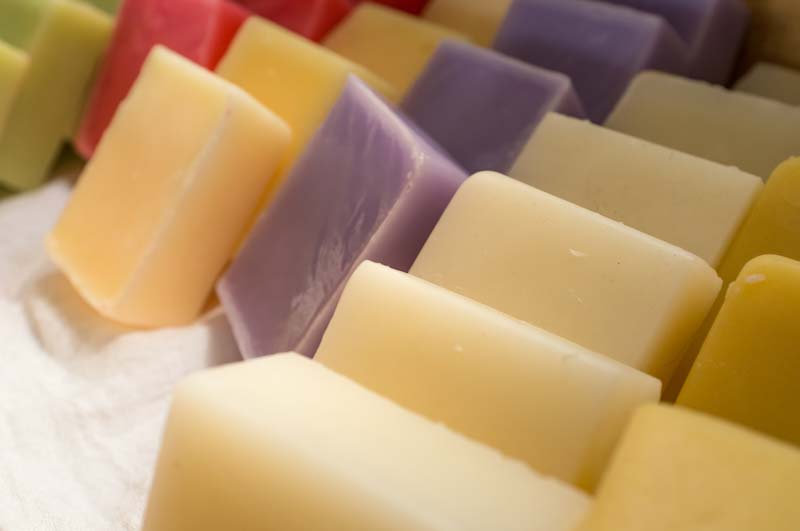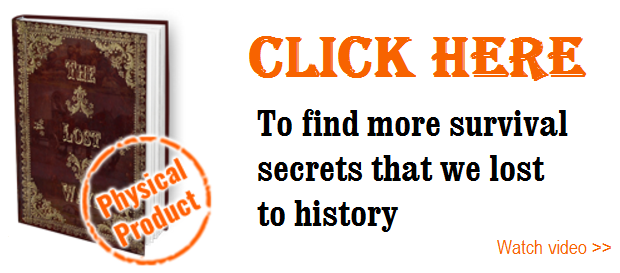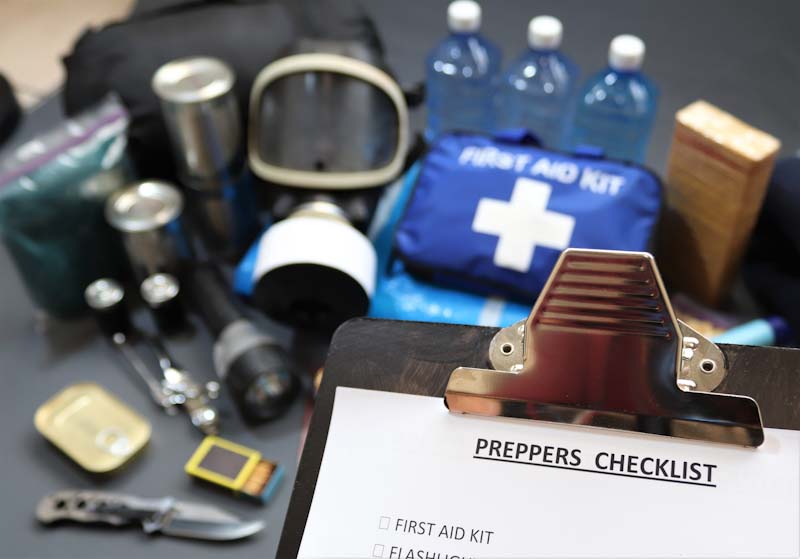In a survival situation, regardless of its magnitude, duration or outcome, hygiene will still be an important part of your preparations. If you don’t wash your hands and body, skin infections will increase as well as the transmission of bacteria and pathogens.
Most preppers have realized by now that personal hygiene is equally important as their other preps, and they will often buy a case or two of soap for storage. That’s perfectly fine since soap can last for decades if stored properly. However, from the self-reliance point of view, rather than buying things made by others, it’s better if we learn to make the things we need ourselves.
A little bit of soap history
The word soap has ancient roots, and it comes from the Latin word “sapo” which was estimated to predate the Roman Empire. In fact, the oldest soap recipe we have discovered dates back over 4,000 years ago, and it was found on a clay tablet in Babylon. The recipe described a simple mixture of cassia oil, alkali, and water. In fact, cultures all around the globe figured out that oils and fats are useful for making a soap base, and various alkaline substances will turn fat into soap. This simple process is still being used today.
During the saponification process, the fat is heated to the right temperature, and a precise amount of alkaline fluid is mixed in. When stirred, the soap thickens and hydrolyzes. Once it cools and hardens, the soap is left to age a bit, and then it’s ready to be used for various hygiene purposes.
Over the centuries, soap has evolved from its rough and ugly cousin made from wood ash and leftover oils into sweet-scented luxury items that everyone loves. In fact, the availability of purchasing reasonably priced soap from merchants almost killed the homemade soap-making process since it saved our great-great-grandparents a significant amount of time.
Many families stopped making soap, and this skill was almost lost. But, thanks to a renewed interest in homemade goods, the modern DIY drive has revived this ancient process and brought it back in many households.
There are various types of soap you can make, and for example, olive oil is often used to make Castile soap, a mild kind of soap. If you add some sand to your soap recipe, you can create an abrasive soap with great scrubbing properties. Today, we will learn how to make our own soap using animal fat and lye.
Getting started
Before we get started with making the soap, it is important to mention that safety plays a huge role in the entire process. Since you will be working with very caustic materials and various residues, you will need to get some gear that will be used for soap-making alone. I advise you to avoid using your good pots, measuring cups, and other utensils since you will ruin those. Here’s what you need to get to make your own soap:
Hardware:
- Stainless steel cooking pot since stainless doesn’t react with lye
- Large spoon (wooden or plastic)
- Pyrex measuring cup (this can handle the heat)
- Scale that can show the quantity down to 0.1 ounce
- Gloves and goggles
- A thermometer (I use a meat thermometer)
- Non-stick mold (this will be used to pour the soap in and will provide the shape of your soap). For flat bars, you can use a non-stick baking sheet, and if you want to make round soaps, you could use round plastic cups. Alternatively, you can buy soap molds since these come in every shape and size you need.
Ingredients:
- Rendered animal fat (this is lard)
- Container of pure lye crystals (sodium hydroxide) from hardware stores
- Clean water
- Vinegar
Note: The vinegar is not needed for the recipe, but it will be kept nearby to counter alkaline burns. You can use any type of vinegar (apple cider, distilled, etc.)
Saponification temperatures of various fats
As mentioned earlier, soap is created by mixing the right amount of alkaline fluid into a matching amount and type of fat. If there is too much fat in your mix, the soap will become greasy and infective. If there’s too much alkaline fluid, your soap will be too harsh. It’s important to get the right ratio when making soap, and it’s also important to know the temperature at which to blend the ingredients.
You will have to heat the oils until they are clear, and you must pay attention not to overheat them. Various fats need to be heated at specific temperatures for the best results, as follows:
- Beef lard – 130° F
- Deer fat – 130° F
- Sheep fat – 125° F
- Pork lard – 120° F
- Goose fat – 115° F
- Bear fat – 115° F
- Vegetable oil – 110° F
- Olive oil – 100° F
Safety Tips
Making soap requires some safety precautions, and you need to pay attention to what you are doing. Safety comes first, so you shouldn’t cut corners during the soap-making process.
It’s recommended to wear disposable gloves and use safety goggles, especially when you are working with lye water and lye crystals.
Keep the vinegar nearby and use it to neutralize the alkaline lye in case of accidental spills.
If you get soap slurry or lye water in your eyes, flush them with great amounts of water. Don’t rinse your eyes with vinegar, and call 911.
Don’t mix hot water with the lye crystals since it may cause splatter.
Mix the lye water only in the Pyrex container since it can handle high heat. If you decide on any other glass container, make sure it is heat resistant. Avoid aluminum containers.
Label your equipment accordingly, and never use it for cooking or other purposes once you’ve used it for making soap.
Keep children and pets out of the area where you are making the soap.
Making the soap
You will make soap by mixing together fat with an emulsion of lye water, which creates a chemical reaction known as saponification. As mentioned before, strong lye is very caustic, and it burned the skin of many distracted people and even blinded some.
Before you start making your own soap, keep that vinegar we mentioned nearby and pour it over your skin (not in the eyes) in case you accidentally spill any lye water on various surfaces, yourself, or anyone else. Put on your gloves and goggles when working.
Back in the day, people would use rainwater and pour it through wood ashes in order to obtain lye that naturally occurs in ash. This can also be done today, but you won’t really know how strong the lye will be. For better, controlled results, it’s better to use lye crystals bought from the hardware store. For this recipe, you will need 2.2 ounces of store-bought lye.
Measure 3.5 ounces of cold water in the Pyrex container and dissolve the lye crystals into it. Place the container on a surface that’s not affected by heat since the lye mixing with water creates a powerful exothermic reaction (it releases heat). The container will get very hot to the touch. It’s also recommended to mix the lye crystals and water in a well-ventilated area.
Let the lye water cool on its own, and in the meantime, measure 1 pound of rendered fat (from the animal of your choice).
After about 40-45 minutes after you’ve mixed the lye crystals and water, you can start cooking. Place the lard in a pot and start melting it over low heat (check the temperatures listed above). Let the lye water cool down until it reaches a temperature of 85 ° F before mixing it with the fat (the cool-down time needed is usually about an hour).
When the lard reaches the desired temperature, and the lye water has cooled, you can mix things up. Slowly stir the lye water into the melted fat using the large spoon. Stir in the same direction until you obtain a thick slurry, and keep in mind that this can occur in minutes or it may take longer depending on the lard you are using.
You will need to stir until the fat changes texture, and when you’re satisfied that it’s well-mixed, you can pour the mix into molds and let it cool. It’s recommended to let the soap slurry cool slowly for best results so you can insulate the molds. For example, you could use a dry piece of cloth or towel and wrap it around the molds you are using.
If you do things right, the soap will harden as it cools, but it still needs some age before it can be used. Wait at least 3-4 days before cutting the soap into flat bars, and then let it age for a few weeks before using it. Wash your hands with a bar soap after a month and notice if the skin feels tingly or slimy. If it does, rinse the hand with vinegar to neutralize the soap and wait a few more weeks before trying the soap again.
Concluding
Making your own soap is another one of those skills that helps you become self-reliant, just like your ancestors did out of necessity. It’s a mandatory skill to have if you need to stretch your cleaning supplies, and it’s more than just a hobby for many people, including preppers. With what you’ve learned from this article and with some lye and a little bit of fat, you won’t run out of soap ever again if you’re willing to put some work into making soap from scratch.







































































I already make soap. Was hoping to get information about making the lye from hardwood ashes and how to test it for pH.
Would rendered rabbit fat be suitable for cooking, soap and/or ointments or hand cremes ?
Any animal fat should work. I use 10 different oils in my soap but the thing you have to find out is what the saponification value is for the rabbit fat. Beef tallow is .140, castor oil is .128 ,
and cocoa butter is ..137. You multiply the sap value by the number of ounces you’re using of each oil/fat. I don’t know what the value is for rabbit fat. Sorry.
You left out how much fat is needed for the recipe
you have 2.2 ounces of lye and 3.5 of water
HOW MUCH FAT FOR THIS RECIPE?